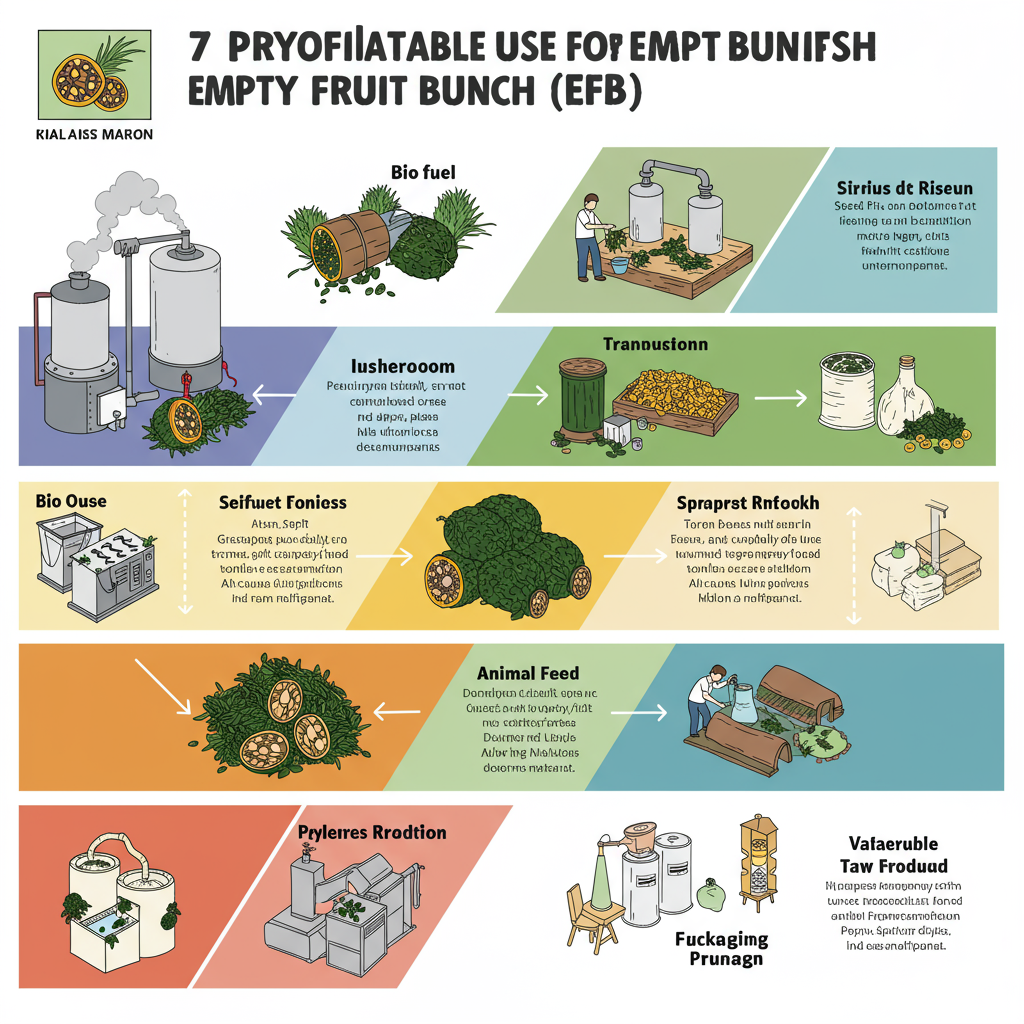Profitable Uses for Empty Palm Fruit Bunch: 7 Ultimate Examples
Table of Contents
- 1. Biofuel Generation: A Primary Profitable Use for Empty Palm Fruit Bunch2. High-Value Compost and Organic Fertilizer3. Sustainable Pulp and Paper Production4. Eco-Friendly Bio-composites and Fibreboard (MDF)5. Formulating Nutritious Animal Feed6. Biochar for Carbon Sequestration and Soil Health7. Mushroom Cultivation Substrate
The palm oil industry is a global giant, responsible for producing essential commodities like Crude Palm Oil and Palm Kernel Oil. However, this process also generates a colossal amount of biomass, primarily in the form of the Oil Palm Fruit Bunch after the valuable fruitlets containing the Palm Kernel are removed. For decades, these empty bunches (EFB) were often left to rot or burned, causing significant environmental problems.
Fortunately, a global shift towards a circular economy is revealing the incredible potential hidden within this biomass. This guide explores the most profitable uses for empty palm fruit bunch, transforming what was once considered waste into a valuable resource. By harnessing innovative technologies, businesses can unlock new revenue streams while contributing to a greener planet.
1. Biofuel Generation: A Primary Profitable Use for Empty Palm Fruit Bunch
One of the most immediate and profitable uses for empty palm fruit bunch is generating renewable energy. EFB has a high net calorific value, making it an excellent feedstock for biofuels. Much like how Palm Kernel Shell is used for its energy content, EFB can be processed into bio-pellets, bio-briquettes, and biogas.
These EFB-derived fuels can power industrial boilers to generate steam and electricity, reducing reliance on fossil fuels. Through gasification or anaerobic digestion, EFB can also produce syngas or methane. According to a study on ScienceDirect, the energy potential from palm biomass is substantial, positioning it as a key player in the global renewable energy sector.
2. High-Value Compost and Organic Fertilizer
EFB is rich in organic matter and essential plant nutrients, particularly potassium (K). Instead of letting this value go to waste, EFB can be composted to create a high-quality organic fertilizer. This process involves shredding the bunches and allowing them to decompose under controlled conditions.
The resulting compost improves soil structure, enhances water retention, and provides a slow-release source of nutrients to crops. This reduces the need for expensive and often environmentally harmful synthetic fertilizers. Utilizing EFB as compost is one of the most sustainable and profitable uses for empty palm fruit bunch, supporting regenerative agriculture and closing the nutrient loop on plantations.

3. Sustainable Pulp and Paper Production
The global demand for paper and packaging materials continues to rise, putting immense pressure on forests. EFB offers a viable, non-wood alternative for pulp production. Its lignocellulosic fibers are well-suited for creating various paper products, from writing paper to cardboard.
Using EFB pulp reduces deforestation and the carbon footprint associated with traditional paper manufacturing. As organizations like the Food and Agriculture Organization (FAO) note, non-wood fibers are critical for a sustainable industry. This makes pulp production a forward-thinking and profitable use for empty palm fruit bunch.
4. Eco-Friendly Bio-composites and Fibreboard (MDF)
The versatility of EFB fibers extends to manufacturing advanced materials. When combined with natural or synthetic polymers, these fibers can create strong, lightweight bio-composites. These materials are increasingly used in the automotive industry for interior parts and in construction for decking, paneling, and furniture.
Furthermore, EFB is an excellent raw material for producing Medium-Density Fibreboard (MDF). EFB-based MDF is a sustainable alternative to wood-based boards, offering comparable performance while utilizing an agricultural byproduct. This innovative application is among the most exciting profitable uses for empty palm fruit bunch.
5. Formulating Nutritious Animal Feed
While raw EFB has low digestibility, modern processing can transform it into a valuable component of animal feed. While other byproducts like Palm Kernel Expeller are well-known as excellent feed ingredients, techniques like steam treatment and fermentation can upgrade EFB for ruminants like cattle and goats.
These processes break down the tough fibers, making the nutrients more accessible. The treated EFB serves as a good source of roughage, which is essential for healthy digestion in livestock. As the cost of traditional feed ingredients rises, this use for empty palm fruit bunch provides a cost-effective and sustainable alternative for farmers.
6. Biochar for Carbon Sequestration and Soil Health
Biochar is a charcoal-like substance created by heating biomass (like EFB) in a low-oxygen environment—a process called pyrolysis. EFB biochar offers a powerful two-for-one benefit: improving soil health and combating climate change.
When added to soil, biochar enhances fertility, boosts water retention, and provides a habitat for beneficial microbes. Critically, the carbon in biochar is stable and resists decomposition for centuries, effectively locking it away. According to the U.S. Biochar Initiative, this makes it a potent tool for carbon sequestration, and one of the most impactful profitable uses for empty palm fruit bunch.
7. Mushroom Cultivation Substrate
Perhaps one of the most unique and highly profitable uses for empty palm fruit bunch is as a substrate for growing edible mushrooms. After being shredded and sterilized, EFB provides the ideal nutrient base and physical structure for cultivating high-value species like oyster mushrooms.
Mushroom cultivation is a high-value agricultural activity that can be done on a small or large scale. It converts fibrous waste directly into a nutritious food source, creating a rapid and profitable return on investment for farmers and entrepreneurs.
Conclusion: From Waste to Wealth
The empty palm fruit bunch is no longer a liability but a significant asset. The seven profitable uses outlined here—from generating renewable energy and producing sustainable materials to enhancing agriculture—demonstrate a clear path towards a circular economy. By embracing these innovative solutions, the palm oil industry can mitigate its environmental impact, create new economic value, and pave the way for a more sustainable future.
Makmur Amanah Sejahtera provides high-quality palm products such as Palm Kernel Expeller, Palm Kernel Shell, Crude Palm Oil, Palm Kernel Oil, etc. Kindly contact us at WhatsApp +6282140002198 or email us at admin@makmuramanah.co.id.
